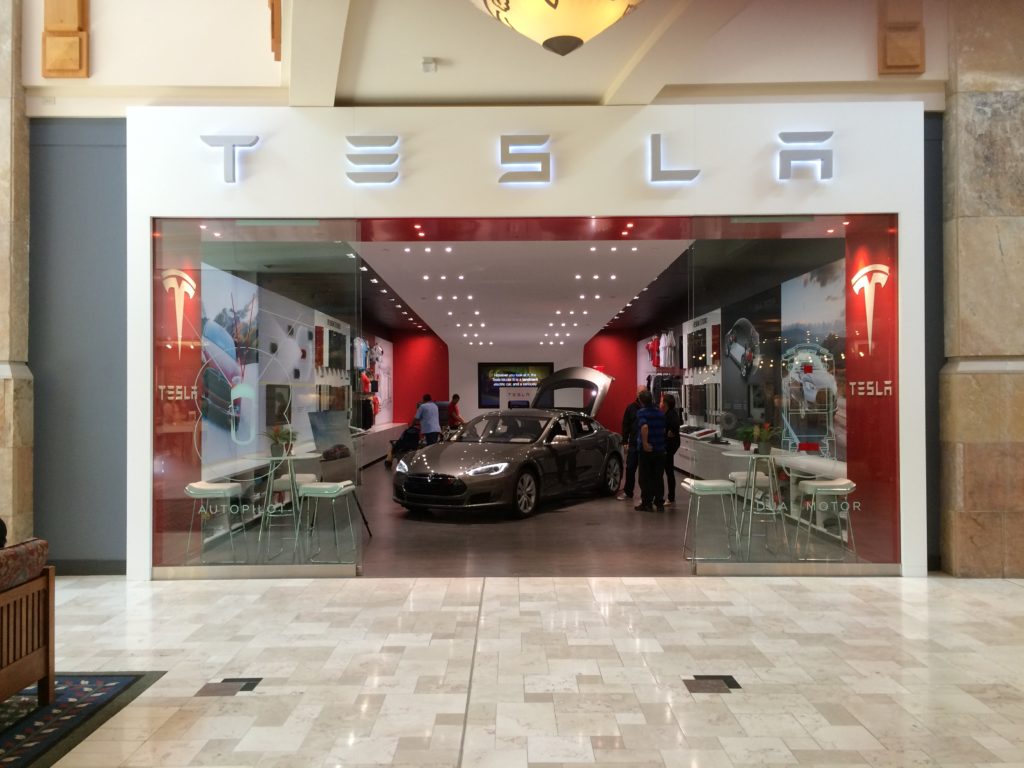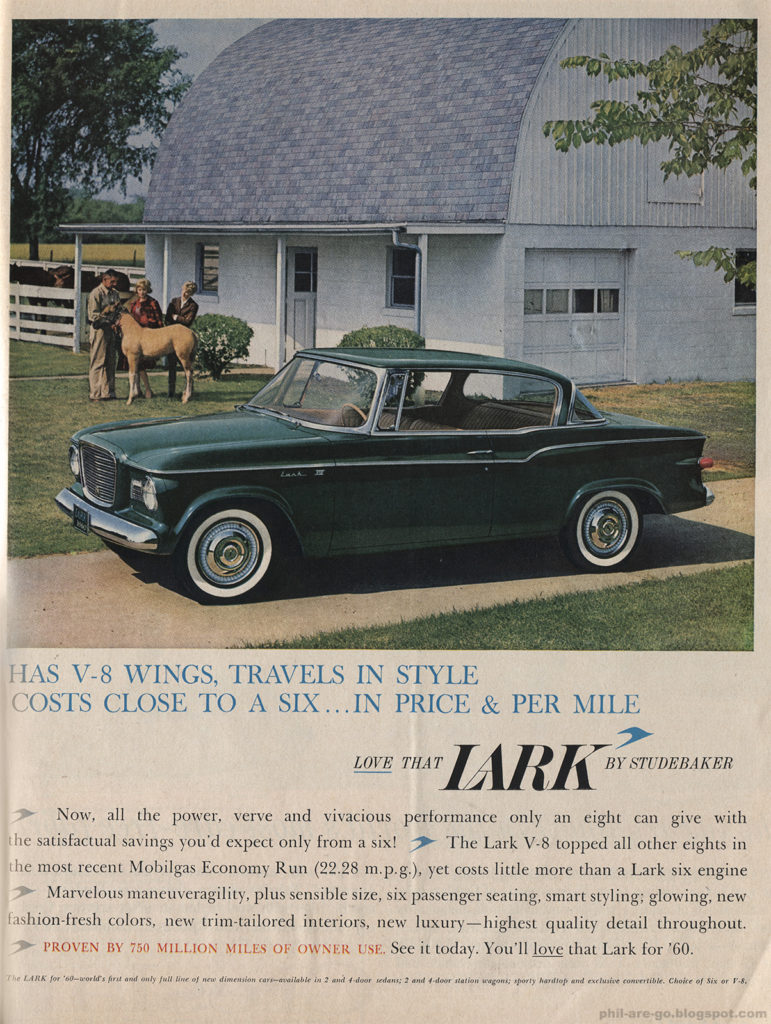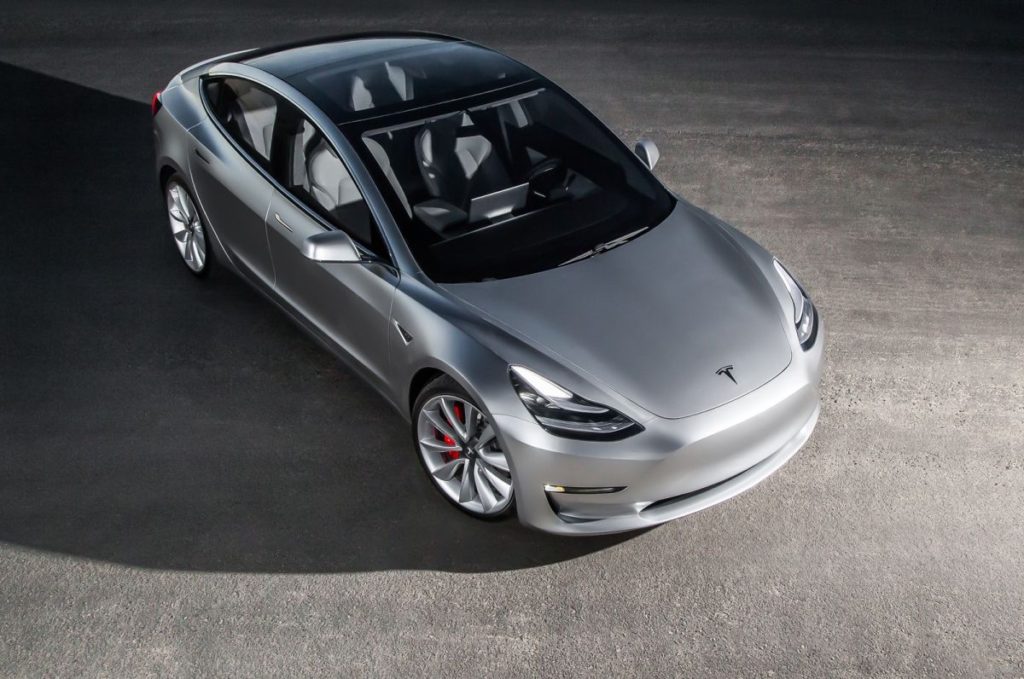
Can Tesla succeed?
History is full of automobile manufacturers that failed. The Dodge brothers were the last to start a new automobile manufacturer in the United States that still, in some corporate form, is in the business today. They did it in 1914. The most recent serious attempt at starting a domestic mass production automobile company was Kaiser, in 1947. Henry Kaiser had built the Hoover Dam and turned the tide of World War Two mass producing Liberty ships. Building automobiles was the only challenge that overwhelmed him, in less than ten years.
Why is this?
Because it is easy in the automobile industry to make money without making a profit. In the end, though, making a profit is all that matters.
Studebaker provides a case study that illustrates Tesla’s current problems. Though the differences are obvious, the similarities are critical. Studebaker illustrates how a car company makes money without making a profit – which is what Tesla is doing right now.
In the late 1950’s, Studebaker saw an opportunity. Outdated designs had driven sales in a downward spiral from the halcyon postwar years of Lowey designs and a sellers’ market. Korean war restrictions on steel supplies had deprived it of sales that might have generated funds to update its designs and keep pace with the competition. Even vampiring the marrow from Packard’s financial bones after merging with it in 1954 had not resuscitated Studebaker’s balance sheet. But in 1958, the economy was in recession. There was a market for automobiles smaller and more economical than those produced in Detroit by General Motors, Ford, and Chrysler.
So, Studebaker introduced an “new” car that wasn’t new: the Lark.

The Lark was, in actuality, the least expensive model in Studebaker’s previous model line- the Champion – given a major face lift. Studebaker shortened the wheelbase at the front, added completely different sheet metal, front and rear, and offered the Lark with existing six and V-8 engines. The redesign left only hints of the old car in the Lark’s outward appearance. Studebaker advertised the Lark as classy and economical to operate, all in one easily affordable automobile.
Introduced into an economy still recovering from the 1958 recession and with only the dowdy American Motors Rambler as competition, the Lark was a home run. Studebaker sold 153,844 vehicles in the 1959 model year, triple 1958 sales. Instead of previous years’ losses, Studebaker reported a “profit” of $28 million for 1959.
By 1966, Studebaker was out of the automobile business.
The parallels with Tesla are striking. Like Studebaker in 1959, Tesla is creating a market that others are perfectly positioned to fill. Like Studebaker in 1959, Tesla is woefully undercapitalized, albeit for different reasons. Like Studebaker in 1959, Tesla is obscuring its underlying financial weakness by claiming it is making money on current production.
How an automobile manufacturer accounts for the costs of developing a vehicle determines what is reported by it as “profit” from building that vehicle. The real costs of producing any automobile or truck, properly viewed, include all costs of developing its design, not merely the parts, labor, and direct production overhead required to manufacture it. Those design costs, of course, are already money spent by the time the new model is introduced. But if that new model does not pay back those costs, there will be no money to finance development of future new models. Eventually, as the competition catches up, sales will slide and then tumble. With no new models to compete with the latest from its competitors, the automobile manufacturer is doomed.
That’s what killed Studebaker and that is the present danger to Tesla.
Because Studebaker started with an existing platform and drivetrain, Studebaker invested very little developing the Lark. Spreading that minimal development cost over the anticipated production volume of the model added very little to the cost of each vehicle, over and above overhead, parts and labor.
“Amortization” is the accounting term for spreading development costs over the expected volume of production to assign each vehicle produced a share of that cost. Amortization is designed to provide the real cost of producing the vehicle, so that true profit can be recognized. Profit, so measured, is called “net profit,” and contrasts with “gross profit,” which measures the extent to which gross receipts from sales exceed direct production expense, and “operating profit,” which measures gross profit after also deducting fixes costs overhead costs and taxes (and adding back depreciation on plant and equipment).
Studebaker could easily show a “profit” on the Lark, but the profit was illusory. It was really only an operating profit. The profit existed only because there had been so little investment. That profit was not large enough to fund developing competitive models for the future.
In 1960, General Motors, Ford, and Chrysler introduced compact cars. Lark sales dropped to 133,984. In 1961, General Motors introduced compacts in their mid-priced lines, as did Ford. Lark sales dropped to 92,434.
As the market for compacts moved upscale, Studebaker had little to match the competition. It attempted an image enhancer with the Avanti for 1963, but the advanced Avanti styling only underscored the dated and pudgy look of the Lark. Midway through 1964, Ford introduced the sporty Mustang – at a price point competitive with pricing of compacts. Studebaker cut back, closing its South Bend, Indiana plant and transferring all production to Canada, which meant sourcing engines from Chevrolet. It ceased production entirely in March of 1966. For 1966,, Studebaker produced only 8,947 Larks.
Tesla is no Studebaker. Tesla today produces cars that are in demand and are fashion items, glamorous and with a style that identifies the Tesla owner as socially conscious and prosperous. No other vehicle produced in volume, save only the Corvette, says more about its owner than the Tesla.
But the company is similar under the skin. Can Tesla succeed where so many others have failed?
Tesla, by its own acknowledgement, has spent billions on the Model 3. Those costs have left it with very little capital. It owes billions, and that debt is coming due – fast. Tesla financed much of its development costs by issuing “convertible” bonds: bonds that can be converted to Tesla stock if the stock price reaches a specified price. If the stock does not reach that price, though, bondholder does not profit from converting and the bonds must be paid.
Tesla owes approximately $920 million on bonds due in March of 2019. The conversion price is $359.87. Tesla stock currently sells for less than $300.00 per share. Analysts predict the price will drop to $200.00 per share within a year. A second bond issue with $566 million outstanding is due in November of 2019. Its conversion price is $759.36 per share. Even if Tesla can refinance this debt, it is merely replacing debt with debt. That does not add new capital to the enterprise. It also continues the existing financial drain from paying interest – which Jim Collins, writing in Forbes, estimates at $600 million a year.

But new capital is what Tesla needs, because the Model 3 is not making a real profit.
Tesla has claimed that it is making money on the Model 3 at 5,000 with production at 5,000 units per month. Reality says that’s merely operating profit. No one really knows how much the Model 3 cost to develop or how much of those development costs Tesla is attributing to each vehicle produced. On May 5, 2016, Tesla’s chief executive officer, Elon Musk, told analysts that Tesla would produce 500,000 vehicles in 2018. With sales of the Model S and Model X combined at 80,000 vehicles annually, meeting that prediction would require producing 420,000 of the Model 3 annually.
Tesla, of course, is nowhere near that goal. At Model 3 production levels of 5,000 per week, Tesla would be at an annual production level for all Tesla vehicles of 340,000. At 7,000 per week, the production total would be 444,000 vehicles, of which the Model 3 would have to contribute 364,000 vehicles. To put that rate of production in perspective: Toyota’s best sales year for the Camry was 2015, when 429,355 Camrys were sold. In 2017, Camry sales were 387,081. And Toyota has a dealer in every city of appreciable size. Tesla has sales outlets in only 26 of the 50 states, with many of them being nothing more than a mall location, like the Denver location pictured at the beginning of this article.
The current Model 3 is priced from $49,000 to over $80,000. Tesla no longer projects a date at which the $35.000 base price model will be in production. UBS Securities, as reported in the Wall Street Journal on August 17th, disassembled a Model 3 to estimate what it cost to build. UBS concluded each Model 3, at current pricing, generates $3,420 “operating profit,” but that Tesla would lose $2,300 per vehicle sold at $35,000.
So, Tesla is Studebaker.
Though the Model 3 may make money, if its production volume is below that which Tesla projected, then the costs of its development that each Model 3 must pay back rise proportionately to the sales shortfall. Odds are that Tesla bet the farm by assuming much larger volumes for the Model 3 than it can reach, especially once the novelty wears off and the competition enters the market for electric cars. If so, those development costs will drown any operating profit in real red ink.
But the similarity to Studebaker doesn’t end with the books.
Can Tesla succeed? Like Studebaker’s Lark, the Model 3 faces potentially devastating competition. The high price at which it must sell the Model 3 to earn even an operating profit make Tesla much more vulnerable to competition than it would be if the car were profitable at the promised $35,000 price. Jaguar has the I-Pace in dealer showrooms now, at a base price of $69,500. Audi is teasing the e-tron, due for introduction later this year. Meantime, the $35,000 market is not being ignored. The chief executive officer of Volkswagen has promised it will “build electric cars by the millions, not just for millionaires.” He promises that the various brands owned by Volkswagen will be introducing a new electric vehicle almost monthly in 2019.
The threat from that competition is enhanced by government policy. Wall Street Journal columnist Holman Jenkins, Jr., points out that existing automobile manufacturers have every incentive to build electric cars for the mass market at a loss. In Europe and China, future government regulations may make selling gasoline powered vehicles contingent on meeting quotas for sale of electric cars. Pricing of the more popular gasoline powered vehicles can absorb losses on electric cars. Tesla, of course, lacks that cushion.
The bottom line?
Studebaker did not go out of business. It merely went out of the automobile business.
As sales tumbled, Studebaker management realized it was hopeless. Rather than pouring good money after bad producing automobiles, it started buying smaller profitable companies, turning itself into a conglomerate before the term became popular. It bought manufacturers of generators, lawn equipment, floor polishers, and other products – even STP, the automotive elixir. In that day, the tax law allowed offsetting past losses against current profits to avoid tax on those profits. Studebaker made the companies it acquired even more profitable by sheltering their profits in the ‘tax loss carry forward’ accrued from a decade of losses selling automobiles.
Studebaker’s management maximized its assets to preserve the company. Studebaker’s biggest asset happened to be its ability to shelter profits under the tax laws.
So, can Tesla succeed as a volume independent manufacturer of automobiles?
Tesla, too, has an enormously valuable asset.
That asset is the brand.
There is every reason to believe Tesla management is fully aware of that value. It is the brand, after all, that accounts for a stock price giving Tesla a market capitalization (stock share price multiplied by shares outstanding) similar to that of General Motors.
Tesla needs money.
Expect it to find it from a company that’s already in the business of making cars.
That’s what happened to the last domestic start-up automobile manufacturer that is still selling automobiles today.
Dodge was sold to Chrysler in 1928.
For more that is the ongoing saga of Tesla and its founder, Elon Musk, check our post about Musk’s battle with the Securities and Exchange Commission and our posts examining the similarities between Elon Musk and Henry Ford.


